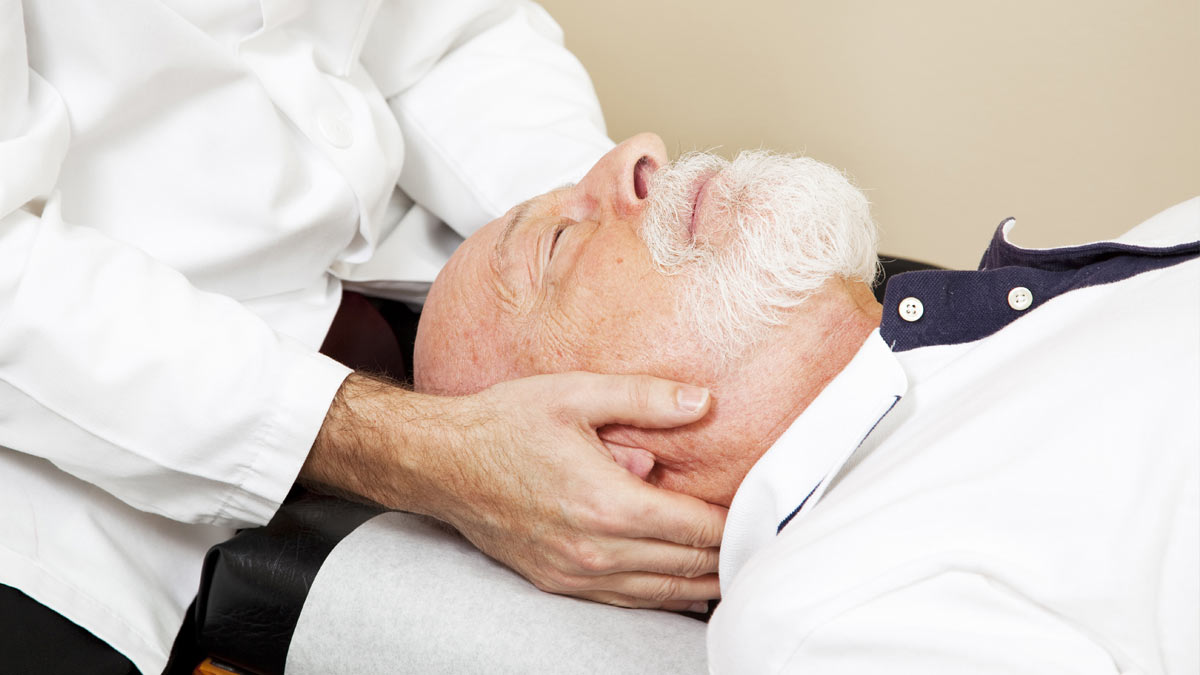Chronic pain affects an estimated 100 million Americans, and while prescription medications are often used as the first line of treatment, this approach doesn’t work for everyone.
Kevin Lewis, D.C., owner of Greenville Spine Institute, uses a holistic, all-natural chiropractic treatment approach that provides an alternative to addictive medication or invasive surgery.
He described a holistic approach to health care and pain management as one that regards human beings as more than just a “set of their components.” It’s the idea that your body’s systems need to integrate and function as a whole for you to reach your optimum health.
“The natural state of the body is to be healthy,” Dr. Lewis explained. “It’s called homeostasis. When it gets out of balance, we start to exhibit unhealthy symptoms.”
Christopher Gray, D.C, who owns Advantage Healthcare of Charleston, noted that a holistic approach is nothing new in regard to chiropractic care.
“At AHC, we strive to help the patients from the inside out. We are not trying to pump them full of medications that could just mask the symptoms they have. We look at the overall issues the patient has and try to do a differential diagnosis to come up with the best treatment plan for that patient.”
AHC has a physical medicine office staffed with a medical doctor and a nurse practitioner.
“So doing our differential diagnosis comes not only from the chiropractor but also the medical staff,” Dr. Gray remarked.
Patients visit Greenville Spine Institute for neck and back pain and headaches but also for digestive complications and sinus problems. Dr. Lewis has seen the most severe cases – people who have tried injections and medications but are still experiencing chronic pain.
GSI utilizes an adjustment technique called the Gonstead Method, so-named because it was invented by Chiropractor Clarence Gonstead. It involves a specific process to detect if a vertebra has shifted out of position and is affecting the nervous system’s function. A subluxation – a joint that’s misaligned – often is pinpointed as the problem.
“We can move the bone back into position so it can function normally again so the body starts to heal and return to homeostasis,” Dr. Lewis said.
Dr. Gray’s adjustment specialties include the diversified, Thompson and activator methods. In addition, he attended school to earn his CCEP (certified chiropractic extremity practitioner) certification to learn how to adjust and rehab the extremities – anything other than the spine. The various adjustments he performs all have their own way of manipulating bones. For example, the diversified procedure involves mainly using your hands to move the bones.
“The activator is a small hand-held machine that I as the chiropractor use to move the bone,” explained Dr. Gray. “This activator is a very low-force procedure that I often use on my severely arthritic patients or elderly patients who don’t like the manual adjustments.”
Dr. Gray’s background as a licensed personal trainer has helped him better understand what people in pain are experiencing. He was studying engineering at Clemson when he injured his back and a chiropractor helped him get moving again.
“I believe you must work toward healing the muscles, tendons and ligaments that attach to the skeletal system of the body,” stated Dr. Gray. “Without doing that, the bones will go back to where they were due to the muscles pulling them back. In my practice, I believe that being active and doing the physical work to try to promote healing through exercise is the best way to heal.”
GSI compliments its treatment approach with proprioceptive neuromuscular facilitation therapy, which Dr. Lewis said can be “thought of as intensive stretching,” and strengthening exercises that combine to reduce the pain.
Dr. Lewis stressed that rehab and exercise are important factors in overall wellness. GSI’s approach addresses the problems with a sedentary lifestyle: “We are designed to move. If we don’t get up and move, our body starts to break down. And the healing process takes longer.”
Proper nutrition is critical in helping bones and nerves heal faster. Issues such as magnesium deficiency can hamper a person’s ability to heal, said Dr. Lewis. Avoiding junk and processed foods and eating healthy is key because “We are what we eat.”
Of nutrition’s significance, Dr. Gray proclaimed, “I believe without a second thought that it is very important to pair proper nutrition with anything in your life.”
As a holistic approach, chiropractic can provide people with a nonchemical alternative to opioids in treating pain. Dr. Lewis, who worked in law enforcement prior to becoming a chiropractor, witnessed America’s opioid epidemic firsthand.
“We need to face that crisis and correct it,” he said. “Chiropractic’s treatment approach to health is crucial in winning the war against opioid addiction.”
Like Dr. Lewis, Dr. Gray has seen patients who have tried everything, and prescription medications haven’t worked. While he knows he can’t help everyone, he always strives to provide his patients with relief.
“I believe that my team is the best at what they do,” he said. “We treat everyone who comes into our office as if they were like my mother and father.”
In fact, his parents are being treated by AHC’s team.
Dr. Gray said what continues motivating him after 20 years of chiropractic practice is the hugs he receives from patients who say they are no longer in pain or that they can enjoy simple pleasures such as going dancing.
“It is the life-changing events like that I absolutely love,” declared Dr. Gray.








